Inside JLCPCB Factory: A Deep Dive into PCB Manufacturing
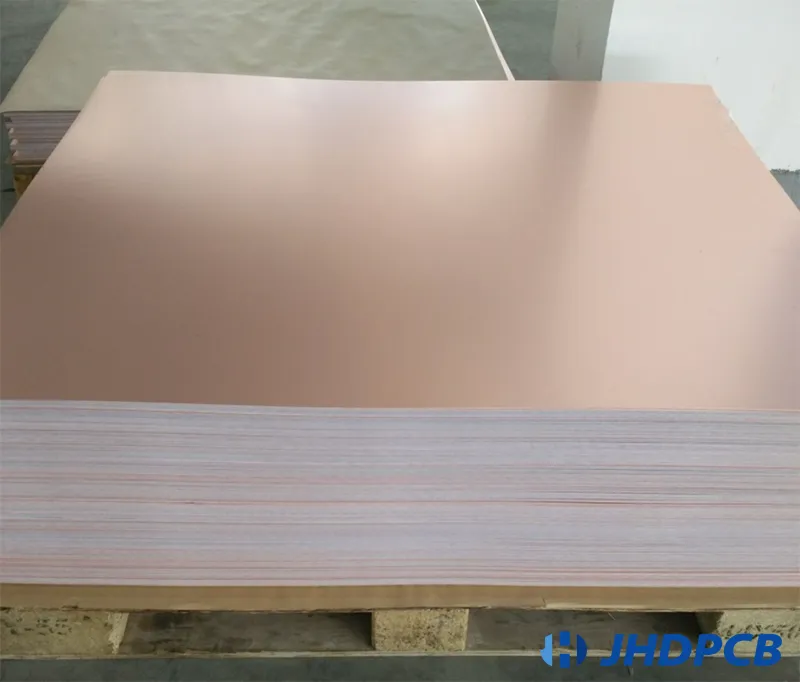
In the age of ever-evolving technology, Printed Circuit Boards (PCBs) are the unsung heroes powering our devices. JLCPCB factory stands at the forefront of this industry, transforming raw materials into the fundamental building blocks of modern electronics. This article will take you behind the scenes, exploring the sophisticated processes employed at JLCPCB and shedding light on how they ensure precision, efficiency, and affordability in PCB manufacturing and assembly.
Raw Material Handling at JLCPCB

The initial phase of PCB manufacturing at JLCPCB is characterized by the meticulous selection and preparation of raw materials. This crucial step ensures the foundation for high-quality circuit boards. JLCPCB employs a variety of materials, including different grades of laminates, copper foils, and other specialized materials, each chosen for their specific performance characteristics and adherence to industry standards. Proper storage and handling protocols are strictly followed to maintain material integrity and prevent contamination, thus laying the groundwork for consistent and reliable PCB production.
| Material Type | Common Variants | Typical Application | Key Properties |
|---|---|---|---|
| Laminates | FR-4, CEM-1, Polyimide | Core PCB substrate | Mechanical strength, dielectric constant, thermal resistance |
| Copper Foil | 1/2 oz, 1 oz, 2 oz | Conductive layer for circuits | Conductivity, thickness, adhesion |
| Prepreg | Various resin content | Insulating layers between copper layers | Dielectric strength, resin flow |
PCB Fabrication Process: Layer by Layer at JLCPCB
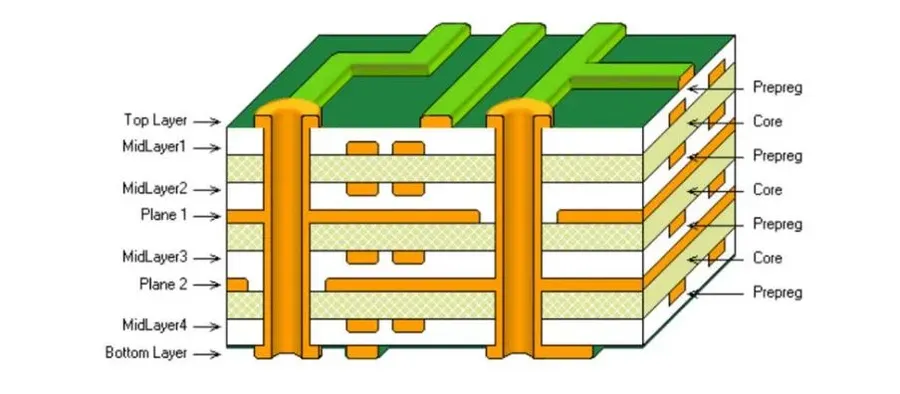
The transformation of raw materials into functional printed circuit boards (PCBs) at JLCPCB is a meticulously controlled multi-stage process. This section details the core steps involved in PCB fabrication, including imaging, etching, and lamination, which are fundamental to achieving the desired circuit patterns and overall board structure.
- Imaging
The fabrication process begins with the application of a photosensitive resist onto the copper clad laminate. Using a photo plotter, the desired circuit pattern is transferred onto the resist layer through UV light exposure, solidifying the pattern in the resist. This precise pattern dictates the copper traces on the final PCB. - Etching
Following imaging, the board is subjected to an etching process. This process removes the exposed copper, leaving behind only the copper areas that are protected by the hardened resist. This step is crucial for defining the conductive pathways of the PCB. Chemical solutions are used to selectively remove unwanted copper with high precision. - Lamination
For multi-layer PCBs, lamination is crucial. Individual etched layers are stacked together with insulating prepreg material and subjected to heat and pressure. This bonds the layers into a cohesive board, creating the multi-layer structure. Precise alignment and temperature control are vital for ensuring structural integrity and electrical connections between layers.
| Process | Description | Purpose | Equipment |
|---|---|---|---|
| Imaging | Transferring circuit pattern onto resist using UV light | Defines the areas to be etched | Photo plotter, UV exposure unit |
| Etching | Chemical removal of unprotected copper | Creates the conductive traces | Etching machines, chemical baths |
| Lamination | Bonding multiple layers using heat and pressure | Forms multi-layer board structure | Lamination press, precise temperature control system |
Automated Drilling and Vias at JLCPCB
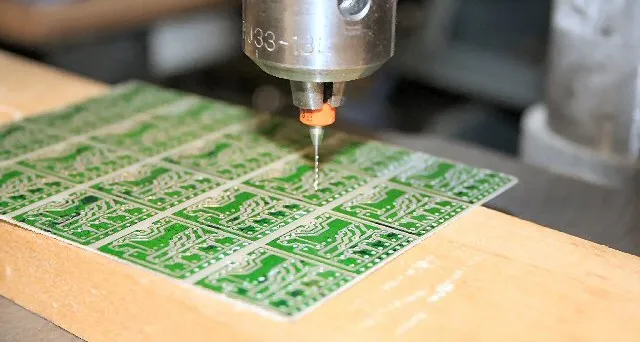
The creation of precise holes and vias is paramount in PCB fabrication, enabling electrical connections between different layers of the board. JLCPCB utilizes state-of-the-art automated drilling equipment to ensure accuracy and efficiency in this critical process.
Drilling and via formation are not merely about making holes; they involve precision engineering, controlling hole diameter, plating quality, and alignment. JLCPCB employs computer-controlled drilling machines that can execute complex drilling patterns with high repeatability.
- Automated Drilling Process
JLCPCB employs high-speed drilling machines with automated tool changers, enabling them to handle various hole sizes and materials without manual intervention. This process ensures high precision and minimizes human error. - Via Formation
Vias are plated-through holes that serve as electrical connections between different layers of the PCB. JLCPCB uses a specialized plating process to ensure reliable and low-resistance connections. - Controlled Depth Drilling
For specific designs, JLCPCB uses controlled depth drilling to create partially drilled holes (blind and buried vias). This technique allows complex multi-layer boards to be designed with optimal interconnection density.
| Parameter | Description | Value |
|---|---|---|
| Minimum Drill Hole Size | Smallest diameter of hole that can be drilled | 0.15mm |
| Drill Accuracy | Precision of the hole placement | +/- 0.05mm |
| Via Plating Material | Material used for plating vias | Copper |
| Drilling Capacity | Number of holes that can be drilled per unit time | Variable, dependent on board complexity |
Solder Mask Application and Surface Finishing at JLCPCB
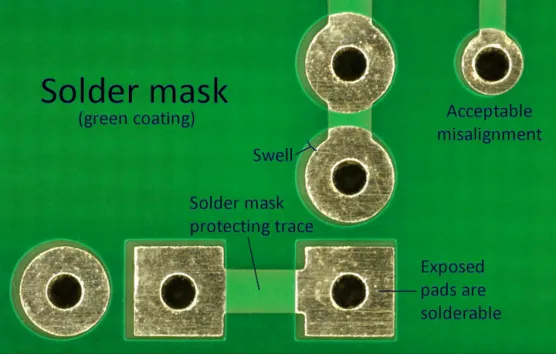
Solder mask application and surface finishing are critical steps in PCB manufacturing at JLCPCB, ensuring both the functional integrity and longevity of the boards. The solder mask acts as a protective layer, preventing solder bridges during assembly, while surface finishing enhances solderability and protects exposed copper from oxidation.
These processes are essential for achieving reliable performance and are carefully controlled by JLCPCB using state-of-the-art equipment and meticulous procedures.
| Process | Description | Purpose | Materials | Equipment |
|---|---|---|---|---|
| Solder Mask Application | Application of a thin polymer layer over the PCB substrate, except for areas designated for soldering. | Prevents solder bridges and protects tracks; determines where components can and can't be soldered. | Epoxy-based or acrylic-based photosensitive solder mask ink. | Automated screen printing or spray coating machines with UV curing systems. |
| Surface Finishing | Application of a metallic coating over exposed copper pads and vias. | Enhances solderability, prevents copper oxidation, improves electrical conductivity. | Electroless Nickel Immersion Gold (ENIG), Hot Air Solder Leveling (HASL), Immersion Tin, Immersion Silver, Organic Solderability Preservatives (OSP). | Automated plating lines, chemical baths, reflow ovens. |
- Solder Mask Materials
JLCPCB uses high-quality, thermally stable solder mask materials that are resistant to chemicals and physical stress. These materials are formulated to withstand the high temperatures of reflow soldering processes. - Precision Application
The solder mask is applied with precise control using automated methods like screen printing or spray coating. This ensures consistent thickness and accurate coverage, conforming to the design specifications. - UV Curing Process
After application, the solder mask undergoes a UV curing process that hardens it, making it robust and resistant to environmental factors. The curing process is crucial for ensuring long-term reliability. - Variety of Surface Finishes
JLCPCB provides a range of surface finish options, including ENIG (Electroless Nickel Immersion Gold), HASL (Hot Air Solder Leveling), Immersion Tin, and OSP (Organic Solderability Preservatives). Each finish offers different benefits concerning solderability and long-term reliability. - Quality Control
JLCPCB implements stringent quality control checks at each stage of solder mask application and surface finishing to ensure that each PCB meets the required specifications.
PCB Assembly Process at JLCPCB: Component Placement
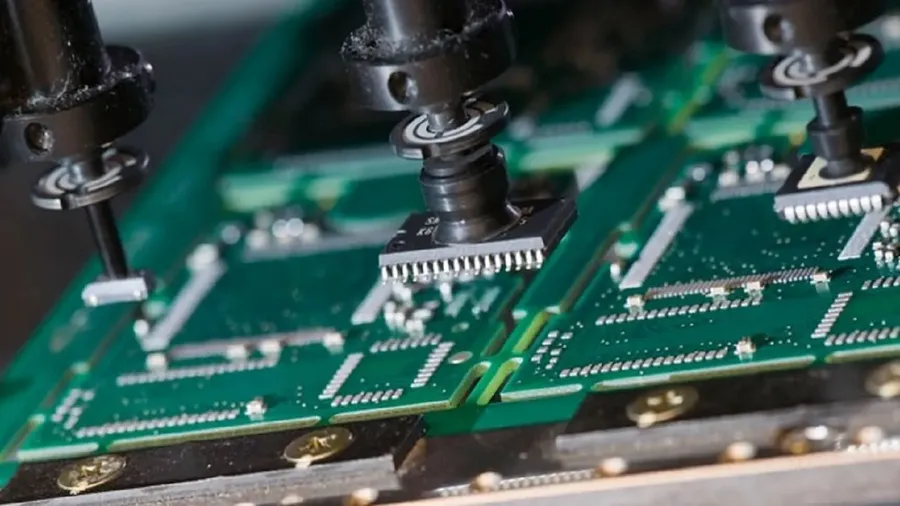
The component placement stage in PCB assembly at JLCPCB is a highly automated process, crucial for achieving both precision and high-volume production. This stage involves the accurate and rapid placement of electronic components onto the bare printed circuit boards using both Surface Mount Technology (SMT) and through-hole techniques, setting the stage for subsequent soldering and testing. JLCPCB utilizes advanced pick-and-place machines equipped with vision systems and precise robotics to ensure accurate component positioning.
| Technology | Description | Components | Placement Method | Typical Applications |
|---|---|---|---|---|
| Surface Mount Technology (SMT) | Components are directly mounted onto the surface of the PCB. | Resistors, capacitors, integrated circuits (ICs), LEDs | Automated pick-and-place machines with vacuum nozzles. | High-density designs, consumer electronics, portable devices. |
| Through-Hole Technology (THT) | Components have leads that are inserted through drilled holes on the PCB. | Connectors, switches, large capacitors, inductors. | Manual insertion, automated assembly for specific components. | Power supplies, high-current applications, robust mechanical connections. |
- Precision Placement
JLCPCB uses high-precision pick-and-place machines to accurately position components onto the PCB, crucial for complex circuits and high-density layouts. These machines are programmed with the exact coordinates of each component, ensuring minimal variation from board to board. - Automated Process
The entire process, from component selection to placement, is automated, significantly reducing human error and increasing production speed. This automation allows for consistent quality and high throughput, enabling JLCPCB to meet the demands of large-scale production. - Vision Systems
Integrated vision systems inspect the placement of each component, identifying misalignments or errors before proceeding to the next stage. These systems use camera technology and image analysis algorithms to confirm correct placement and orientation. - Component Handling
Components are carefully handled from reels or trays using vacuum nozzles or mechanical grippers, which ensures that they are placed without damage and with correct polarity when required. Careful handling is critical for the reliability of the final product.
Reflow Soldering and Quality Control at JLCPCB
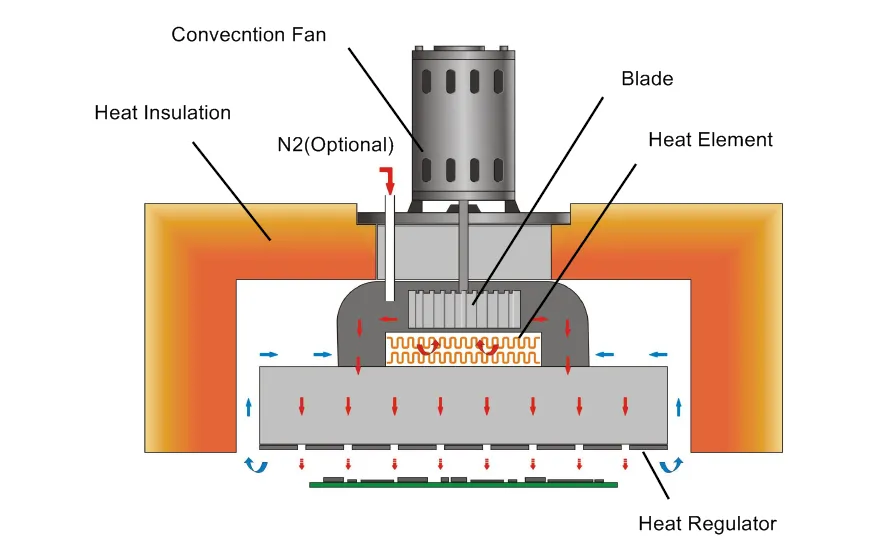
Reflow soldering is a critical process at JLCPCB, ensuring components are permanently and reliably attached to the PCB. This step is followed by rigorous quality control measures to guarantee that every board meets stringent performance and reliability standards.
The reflow soldering process is meticulously controlled to ensure optimal solder joints, which are essential for the electrical and mechanical integrity of the final product. JLCPCB employs advanced techniques and equipment to manage this delicate balance.
| Process Stage | Description | Key Parameters | Quality Control Focus |
|---|---|---|---|
| Solder Paste Application | Precision deposition of solder paste onto PCB pads. | Volume, alignment, and paste viscosity | Ensuring consistent and accurate placement |
| Component Placement | Automated placement of surface mount components onto the solder paste. | Component alignment and pressure | Verifying correct component orientation and position |
| Reflow Soldering | Controlled heating of the PCB to melt the solder paste and form permanent connections. | Temperature profile, ramp rate, and peak temperature. | Precise temperature management to avoid cold solder joints or overheating components |
| Post-Solder Inspection | Visual and automated inspection of solder joints. | Visual and X-ray inspection parameters | Detecting defects such as shorts, opens, or insufficient solder |
Quality control at JLCPCB is an integral part of the manufacturing process. It involves multiple stages from initial inspection of raw materials to final board verification. This multi-layered approach ensures that each PCB produced adheres to the highest standards of quality and reliability.
Advanced Technologies and Specializations at JLCPCB
JLCPCB distinguishes itself through its adept handling of complex PCB designs, going beyond standard single and double-layer boards to provide multi-layer, flexible, and other specialized PCB solutions. The company's commitment to advanced technologies ensures they meet the evolving needs of modern electronics, from simple consumer devices to intricate industrial and aerospace applications.
This section explores these advanced capabilities, detailing how JLCPCB maintains its position at the cutting edge of PCB manufacturing.
| Technology | Description | JLCPCB Capabilities |
|---|---|---|
| Multi-layer PCBs | Boards with more than two conductive layers, enabling increased circuit complexity and component density. | Up to 20 layers standard production, with more on request. Precise layer registration and impedance control. |
| Flexible PCBs (FPC) | Boards built on flexible substrates that can bend and fold. Ideal for tight spaces and dynamic applications. | Single and multi-layer flexible PCBs. Wide range of material options, and specialized surface finishes. |
| HDI PCBs | High-Density Interconnect PCBs, characterized by finer lines, micro vias, and high component density. | Micro vias, fine pitch circuits, laser drilling, sequential lamination for advanced device integration. |
| Metal Core PCBs | Boards with a metal core, for excellent heat dissipation properties. | Various metal core materials like aluminum and copper, thickness options, and thermal management solutions. |
| Specialized Surface Finishes | Surface plating and finishes that improve solderability, protect from corrosion, and enhance signal integrity. | ENIG, HASL, Immersion Tin, Immersion Silver, and OSP for different application requirements. |
| Blind and Buried Vias | Vias that connect layers internally without going through all layers. | Advanced drilling and via formation techniques that enhance routing density, signal integrity. |
JLCPCB leverages cutting-edge manufacturing equipment and a robust research and development team to continuously improve its process and incorporate new technologies. This commitment to innovation allows them to meet the diverse and demanding requirements of their global customer base, ensuring quality and performance for every manufactured PCB.
Factory Pick-Up and Shipping Options with JLCPCB
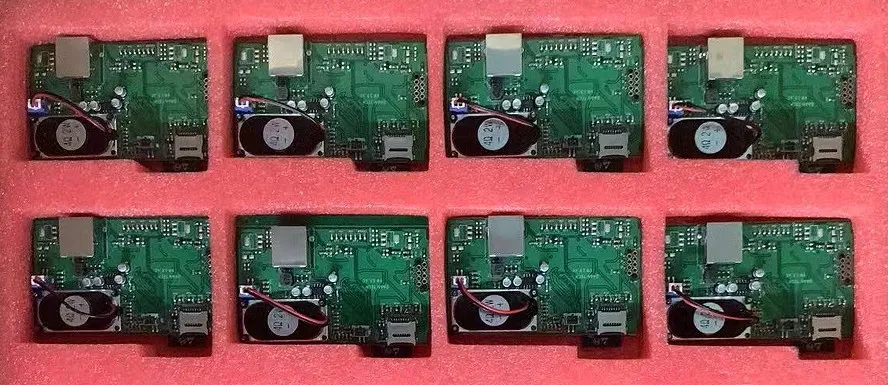
JLCPCB provides flexible options for receiving your manufactured PCBs, including both factory pick-up for local clients and various global shipping methods. This ensures that clients can choose the most efficient and cost-effective way to receive their orders.
- Factory Pick-Up
For clients located near JLCPCB's manufacturing facilities, factory pick-up offers a cost-saving alternative to shipping. This option allows for direct collection of completed orders, reducing both shipping costs and transit times. - Global Shipping Options
JLCPCB offers a range of shipping methods to cater to different needs, including express courier services for faster delivery and standard postal services for more economical options. Shipping times and costs vary depending on the destination and the chosen service. - Shipping Cost Factors
Shipping costs are influenced by several factors, including the weight and dimensions of the package, the delivery destination, and the chosen shipping speed. JLCPCB provides clear information about these factors during the order process to help clients make informed decisions. - Packaging Standards
JLCPCB employs robust packaging methods to ensure that PCBs are protected during transit. This includes using anti-static bags, bubble wrap, and sturdy outer boxes to minimize the risk of damage.
Frequently Asked Questions About JLCPCB Manufacturing
This section addresses common queries regarding JLCPCB's operations, manufacturing capabilities, and logistical considerations. We aim to provide clear and concise answers to assist users in understanding JLCPCB's role in the global PCB manufacturing landscape.
- Where are JLCPCB's manufacturing facilities located?
JLCPCB's primary manufacturing facilities are located in China. While specific addresses may vary, the core operations are centralized within the Guangdong province, a hub for electronics manufacturing. This location enables them to leverage the robust supply chains and skilled workforce present in the region. - Is JLCPCB a Chinese company?
Yes, JLCPCB is a Chinese company. Its headquarters and primary manufacturing facilities are based in China. However, it operates as a global entity, serving customers worldwide. - Who is the largest PCB manufacturer globally and how does JLCPCB compare?
Identifying the single largest PCB manufacturer is complex as market share fluctuates. However, there are several large players in the industry, mostly based in Asia. While JLCPCB is not the absolute largest, it is recognized as one of the top PCB manufacturers, known for its cost-effectiveness, fast turnaround times, and a wide range of manufacturing capabilities, allowing it to compete effectively in the global market. - What is the typical lead time for JLCPCB's assembly service?
The lead time for JLCPCB assembly is dependent on the complexity of the design, the number of components, and the chosen shipping method. Generally, assembly times can vary from a few days to a couple of weeks. JLCPCB provides estimated lead times during the order process, and users can expedite the manufacturing process for more immediate needs. It's important to note that the total time is also affected by the shipping duration, so you must factor in the method and location. - What types of PCBs does JLCPCB manufacture?
JLCPCB manufactures a broad spectrum of PCBs, including single-layer, double-layer, and multi-layer boards, with capabilities for flexible PCBs (flex circuits), and specialized materials like aluminum backed PCBs. They handle various complexity levels, catering to a wide range of electronic applications. - What are the quality control processes at JLCPCB?
JLCPCB employs rigorous quality control measures at every stage of the manufacturing process. This includes automated optical inspections (AOI) at multiple points, electrical testing, and visual inspections. These measures are in place to ensure that all boards meet the required specifications and quality standards. - Does JLCPCB offer component sourcing and assembly?
Yes, JLCPCB provides a comprehensive component sourcing and assembly service. This includes the option to use their in-house component library, or custom sourcing of specific parts, streamlining the process of PCB fabrication and assembly into a single platform and service, with various options depending on the customer's needs.
The JLCPCB factory demonstrates a commitment to precision and efficiency in PCB manufacturing and assembly. Their use of automated processes, coupled with rigorous quality control, ensures the delivery of high-quality PCBs to meet the diverse needs of the global electronics industry. From raw material handling to final shipping, JLCPCB is a model of modern, cutting-edge PCB production. JLCPCB's continuous innovation and dedication to excellence positions them as a key player in the future of electronics. By showcasing the inner workings of the factory, we've highlighted the technological sophistication and commitment that underpin every circuit board produced.
 AnyPCBA
AnyPCBA